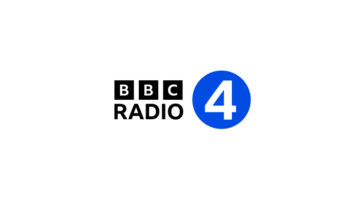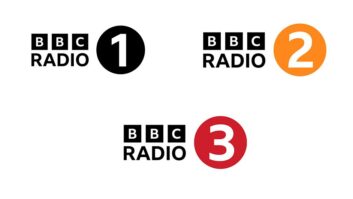WASHINGTON The staff of the Federal Communications Commission is aware of “Franken FMs,” those low-power Channel 6 TV licensees that program their audio carriers as radio stations.
But how the commission feels about them remains unclear, causing lingering concern for some broadcasters. Meanwhile, one of the frequencies that first drew attention to the trend has seen several format changes in the past year. That operation’s struggles, plus a recent FCC action regarding TV’s digital transition, have led some observers to speculate that the time of LPTVs operating as FMs could be coming to a close soon.
The eventual outcome is known: Once the commission issues a rule for all analog low-power TV Channel 6 licensees to make the digital transition, it effectively will end their aural broadcasts of audio programming. Industry observers said the FCC has not issued such a deadline but legal analysts believe it could be as soon as 2012.
The FCC, which is accepting applications for new LPTV facilities, has said such facilities must be digital operations only. It issued a public notice in late March announcing that current applicants for new analog low-power television and TV translator stations must submit amendments to their applications specifying them as digital instead.
‘Unfenced, unguarded’

Franken FM stations — the nickname was coined by broadcast engineers to describe the stitched-together nature of these creations, reminiscent of Frankenstein’s monster — have popped up in major cities including Chicago, New York, Los Angeles, Washington and Dallas, as Radio World has reported.
The audio carrier for TV Channel 6 is centered on 87.75 MHz. Many car and tabletop FM receivers are able to receive the adjacent TV audio, so some opportunistic low-power TV licensees choose to operate aural and visual transmitters independently.
Radio broadcasters call this a loophole in the rules. Owners of such stations reply that they simply are taking advantage of the unforeseen benefit of being adjacent to the FM band and are not doing anything contrary to technical regulations.
A group of attorneys who represent noncommercial broadcasters met with the FCC last fall to express their displeasure and concern. Stations in the reserved band, which runs from 88.1 to 91.9 MHz, in particular are sensitive to competition from commercial broadcasters via the “back door” at the lower end of the FM dial.
How the commission might react to the complaints remains unknown. A spokesman for the FCC said recently, “The issues surrounding the LPTVs in question are being reviewed. Thus the commission cannot give a more definitive answer at this time.”
At least one noncommercial radio station, WBEZ(FM) in Chicago, complained about WLFM(LP), a low-power TV outlet in the Windy City that is programming jazz on its aural service.
“We want a clarification and we still haven’t received one from the FCC yet,” said Torey Malatia, president and chief executive officer of Chicago Public Radio. “This company is misusing a television license for what in fact is a radio venture. Secondly, they are effectively expanding the reserved noncommercial educational FM band, violating its fundamental restriction by marketing the spectrum for profit and commercial gain.
“The reserved band lies unfenced, unguarded and unregulated,” Malatia said.
‘It’s about the consumer’
The TV station, co-owned by licensees Venture Technologies Group and Malibu Broadcasting, is not violating any FCC technical rule, its owners said.
“We are fully living up to the FCC’s guidelines as a licensee. We are following the intent of the rules by providing a new and innovative voice to the community,” said Paul Koplin, chief executive officer of Venture Technologies.

WLFM — which had a 1.2 share of the overall 12+ (Monday–Sunday, 6 a.m.–12 a.m.) audience, according to Arbitron’s January PPM radio ratings — is “fulfilling the FCC’s mission for low-power TV,” Koplin said.
“We are a low-power TV station. We are also an audio source. We do so without interference to others. No one has ever complained to the FCC that we cause interference.” The FCC met with WLFM officials and gave no indication that the station is doing anything wrong, he said.
“It’s about the consumer. We are filling a void in Chicago and are being successful in the middle of a recession. We are viable.”
Koplin, who describes himself as an entrepreneur, said WLFM broadcasts a mix of videos and graphics on its visual carrier.
Venture Technologies also owns KSFV(LP) in Los Angeles, another low-power Channel 6 TV station; it airs Spanish-language programming on its aural service. KSFV shows up in Arbitron’s PPM radio ratings for Los Angeles with a 0.2 share overall of 12+ audience, according to ratings released in February.
Several analysts contacted for this story believe that Franken FMs are working within the rules of the commission, despite noncommercial broadcaster complaints.
“I think the FCC hasn’t acted for two main reasons,” said John Crigler, a communications attorney with Garvey, Schubert and Barer.
“First, no one has brought forth a convincing complaint of interference. Second, barring such a complaint, the [Franken FMs] seem to fall between jurisdictional cracks within the FCC.”
Dane Ericksen, P.E., consulting engineer with Hammett & Edison Inc., said, “It doesn’t appear that the commission is in any hurry to force LPTV stations to convert from analog to digital. It appears analog operation will be allowable for some time to come.”
Ratings
Arbitron in 2008 began releasing Portable People Meter radio ratings for LPTVs on Channel 6 that either operate a different service on their aural carrier or only operate their aural carrier in 2008. Mega Media Group, which was leasing air time from Island Broadcasting on WNYZ(LP), paid for custom research for its Pulse 87 format and signed a multi-year agreement with Arbitron to participate in New York City’s PPM ratings.
Mega Media CEO Alex Shvarts stated then that Arbitron ratings would help Pulse 87 reach the advertising community in a meaningful way and become a legitimate player in a top market.
Pulse 87 was perhaps the best known of the Franken FMs. Shvarts’ dance channel had the nation’s largest broadcast market to play in, but suffered a variety of financial ills, mostly lack of advertiser support, and ceased broadcast operations in late 2009.
It still streams its dance programming online. The TV station meanwhile now is broadcasting a mix of Caribbean and indie music on the aural carrier, according to licensee Island Broadcasting.

Shvarts told Radio World in 2008 that WNYZ was operating within the rules governing low-power TV. “The FCC’s aware of what we are doing. I’m not aware of any concern on their part.”
The legal argument he made was based on Sec. 73.653 of the FCC rules governing low-power television licensees, which states: “The aural and visual transmitters may be operated independently of each other or, if operated simultaneously, may be used with different and unrelated program material.”
The rule section in question was created during the subscription TV days of the 1970s, said Hammett & Edison’s Ericksen, “which clearly creates a loophole for aural carrier only operation of a Channel 6 LPTV.”
He also theorizes that most Franken FM stations are overmodulating their aural carriers so as to be competitive with the loudness of other FM stations.
Mega Media Group at one time expected to export its Pulse 87 brand to KSFV(LP), Los Angeles, WDCN(LP) in Washington and WLFM(LP) in Chicago, but leasing deals with the owners of those LPTVs fell through.
Dennis Wharton, a spokesman for the National Association of Broadcasters, said the lobby group does not represent the interests of Franken FMs and has no opinion on the legality of their operations.











